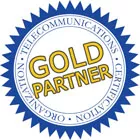Lessons In This Course
Lesson 1 is the Introduction to the Course.
Lesson 2. Review: Channelized Time-Division Multiplexing (TDM) We’ll review the idea of channelized Time-Division Multiplexing, what channels are, and how they can be used to aggregate traffic onto a high-speed circuit. Then we’ll raise some questions: is that an efficient way to connect devices that produce traffic in bursts, which means devices that are normally doing nothing? And what about the problem of a single point of failure for all the aggregated traffic? Subsequent lessons explore the answers to those questions.
Lesson 3. Statistical TDM: Bandwidth-on-Demand.
In this lesson, we’ll understand how circuits that move bits constantly can be used efficiently when the user’s traffic profile is: “idle most of the time, interspersed with bursts of data every once in a while.” The answer is overbooking. This is also called statistical multiplexing and bandwidth-on-demand, and is a key part of a packet network: the internal circuits are heavily overbooked, to give users the highest speed at the lowest cost. It is necessary to know the users’ historical demand statistics – also called their traffic profile – to know how much to overbook, hence the term statistical multiplexing.
Lesson 4. Private Network: Bandwidth on Demand + Routing.
The purpose of this lesson is to expand the discussion of the previous lesson to include multiple circuits. The result is called a private network, and is the simplest framework for understanding routers, routing, network addresses and bandwidth-on-demand.
Lesson 5. Routers
In this lesson, we’ll take a closer look at a router, more precisely identifying the functions a router performs to implement a packet network, and understand how a router routes by examining the basic structure and content of a routing table. We’ll also understand how the router can act as a point of control, denying communications based on criteria including network address and port number, why this is implemented and its limitations. The term Customer Edge (CE) is defined in this lesson.
Lesson 6. IPv4 Addresses
Here, we’ll understand IPv4 addresses, address classes and the dotted-decimal notation used to represent them.
Lesson 7. DHCP
In this lesson, we’ll cover DHCP: the Dynamic Host Configuration Protocol, and understand the mechanism by which a machine is assigned an IP address. We’ll also understand how the “dynamic” host configuration protocol can be used to assign static addresses to machines and the advantages of this method.
Lesson 8. Public and Private IPv4 Addresses
The purpose of this lesson is to define the terms “public” and “private” IP address, review how IP addresses are assigned and the costs for those addresses, then cover the ranges of IPv4 addresses that are used as private addresses, and understand how and why they are used.
Lesson 9. Network Address Translation
In this lesson, we’ll explore how private IPv4 addresses used in-building and a public address required for Internet communications can be joined together with a software function called Network Address Translation.
Lesson 10. IPv6 Overview
Completing this course on IP, we’ll first review the next generation of IP: IPv6, understand the improvements compared to IPv4 and review the format of the IPv6 packet and its header.
Lesson 11. IPv6 Address Allocations and Assignment
Finally, we examine the structure of the 128-bit IPv6 address, review the different kinds of IP addresses, the organizations that allocate them, and the current plans for how addresses will be assigned to end users… and how every residence gets 18 billion billion IPv6 addresses.














 Routing IP Packets to IP Addresses
Routing IP Packets to IP Addresses